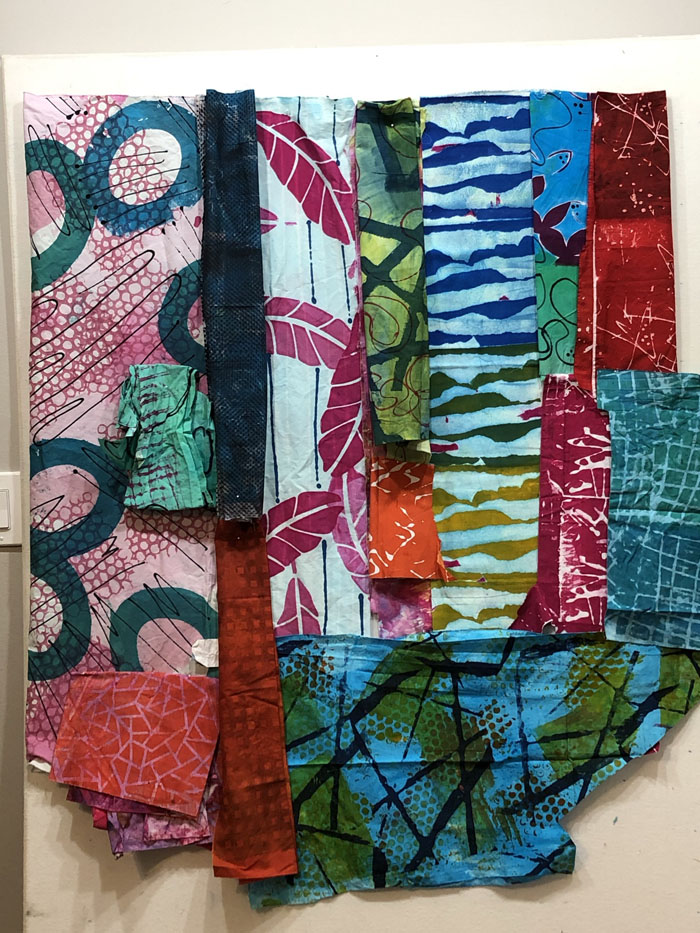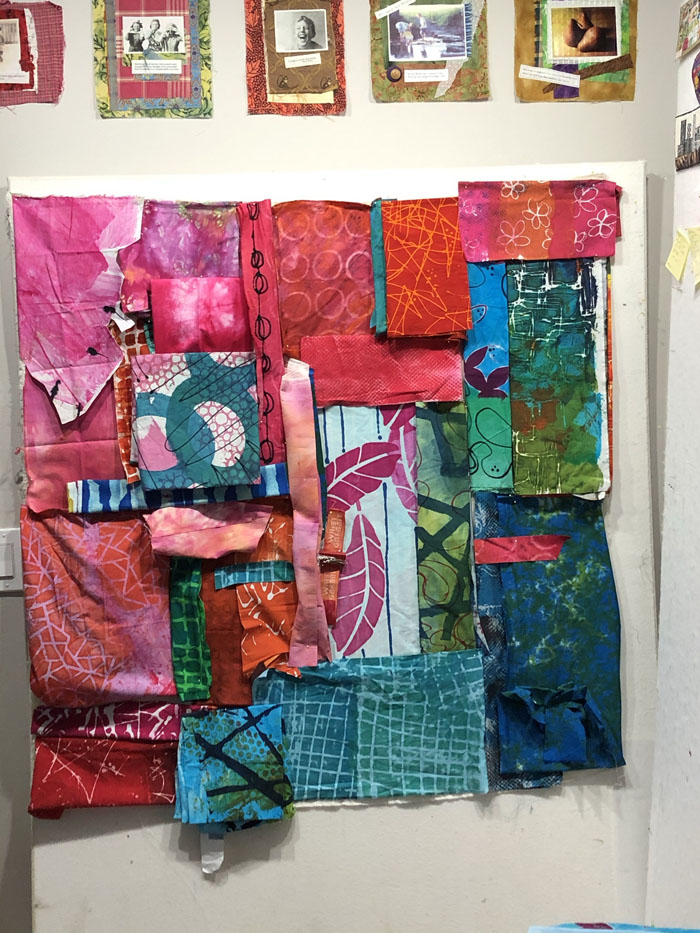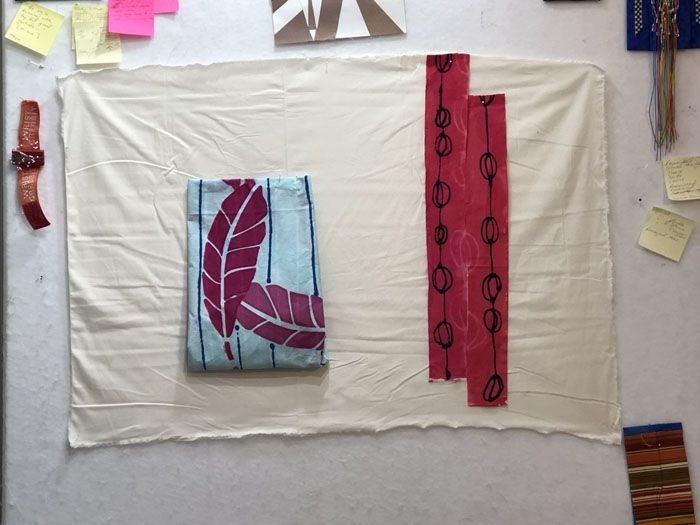As I mentioned in an earlier post, a specialty fabric or two can be the primary inspiration for an entire quilt. And that’s what I wanted to try.
This is sort of what I had in mind. I had intentionally dyed some large scale fabrics in order to try my hand at this. Plus, I had a few from earlier dye sessions. I thought I could do something with these, keeping the large scale pieces more or less intact, so their designs would still show.

I put my muslin support fabric up on my design wall (nearly 4′ x 5′) and started auditioning fabrics. I almost immediately removed the large circles from the mix since I thought the colors looked a little muddy.

Hmm. I could see that the light blue fabric with fuchsia leaves was standing out A LOT. What to do? (Note that all fabrics are just folded and pinned in place at this point.)

I made the highlight fabric smaller. And, of course, added the circles back. (Can you say “trial and error?)
I was loving the colors, but the composition was definitely lacking. I thought it needed some variety of scale, so I made some small units with scraps. (These are just glued to one another.)
Well, they look pretty exciting don’t they? But, how to best use them?

Those little pieces definitely added energy, but everything was looking pretty messy at this point. I decided I needed to commit to CUTTING fabrics, so I could see it all better.
Which is when I realized I had gotten way off track.

I was loving the colors, but I was having a terrible time using those large scale prints. Finally, I decided that my fabrics just weren’t large enough for this size quilt.
So, I started again, at about one quarter the original size.
I could immediately see that this was much more viable. On to round two.
BTW, I don’t fret when I have to rework something. Each “detour,” as I call them, has value. I learn from them. Typically, I’m excited to use that new knowledge as I plow ahead into the next thing.
How do you react to restarts?
Ellen Lindner





I could not restart my latest quilt. It was done, and I wet it to take off the markings I’d used for quilting words.
As it was a crumb/scrap quilt, I’d incorporated some fabrics from unknown sources with unknown histories. A few bled. Also, some of the ones I’d used from my own previous projects bled.
I decided to try a color catcher and found a product at a grocery store. It worked — sort of. It did get rid of the bleed coloring, but it also washed out most of the red bits and turned the a good number of the purples (not all) brown. The gorgeous batiks I’d used for borders were washed out, too. Fortunately, because there were so many scraps of so many colors the washed-out colors didn’t ruin the blocks. The borders, well….
I have almost always washed my fabrics prior to cutting, and now I will have to soak the crumb blocks prior to incorporating them into a quilt. Live and learn.
Oh my goodness, Sandy, what a mess! I’m sorry you had all those problems. I know that’s very frustrating.
I hope you’re happy with the result, nevertheless. (If not, I’ve been known to over dye, paint over, or cut up projects! Pretty radical, I know.)
Thanks for your reply, Ellen. The quilt was OK, and it was made for and given to a woman who was scheduled for double-mastectomy surgery the next day. There was no time to do other things, but I was told she loves it. I’ve also been told that some quilters include deliberate mistakes so no one will confuse their work with God’s perfection. Deliberate mistakes are totally unnecessary in my quilts. LOL.
You’re funny, Sandy. I’m the same way when it comes to mistakes. They happen. I correct them. Repeat.
I’m glad your friend liked her quilt. And why shouldn’t set? How thoughtful of you to make it for her!